At the very, very beginning of my career, I did a little stage at an Italian restaurant on the outskirts of Boston, in Waltham, called La Campania. I was a Brazilian among an all-Hispanic kitchen crew. Some were Mexican, some Guatemalan, some Salvadoran. The camaraderie was unmatched, as you may imagine. Ice-cold Modelos at the end of every shift and all. To this day, I’ve never tasted better Italian food in my life. My muchachitos didn’t mess around; they were rolling pasta like nonnas with better playlists.
I worked under the pastry chef, and my responsibility was to prep and serve the dessert soufflés during service. The desserts leaned a bit toward French territory, but surprisingly, no one seemed to mind straying from the Italian theme for sweets, and the soufflé was the undeniable star of the menu. On weekend nights, I’d fire more than a hundred of those fiery little ramekins. Guests would drive hours for the salt-roasted branzino, the butter-tender scallops, or the rabbit ragù, but they’d greet me at the door, right where I managed my tiny oven with, if you’ll allow me to say so, a certain maestria. And they’d say it right away: they were there for the soufflé.
The oven was stationed right by the entrance so guests would be seduced by the sweet, warm aroma as soon as they walked in, just as they had to place their order for the soufflé, which took at least 40 minutes to bake. A brilliant bit of marketing, really. I still copy the strategy to this day: when I want to convince my husband to do something specific, I make sure he walks through the kitchen door while I’m baking a cake. Works like a charm.
That magic chocolate soufflé had olive oil in it. I treasured that preparation, and its unique flavors so deeply, I never wanted to forget them. The olive oil—peppery, rich, almost savory—gave it a depth that made it unlike any other. For years, I’ve been trying to recreate that recipe in my home kitchen (without using 120 eggs would be great), in a way that still captures the elegance and essence of olive oil in all its fullness. I think I’m getting close.
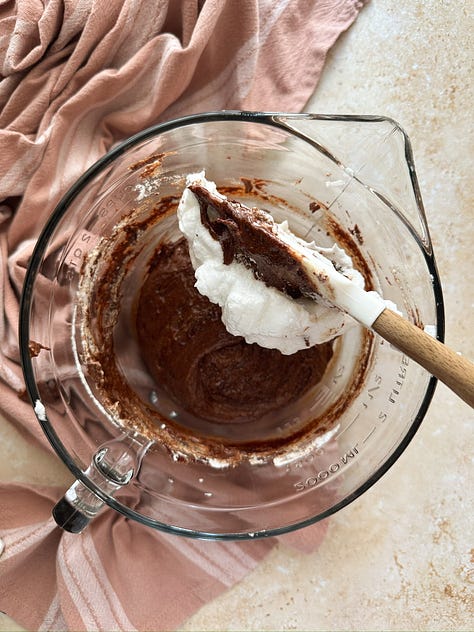
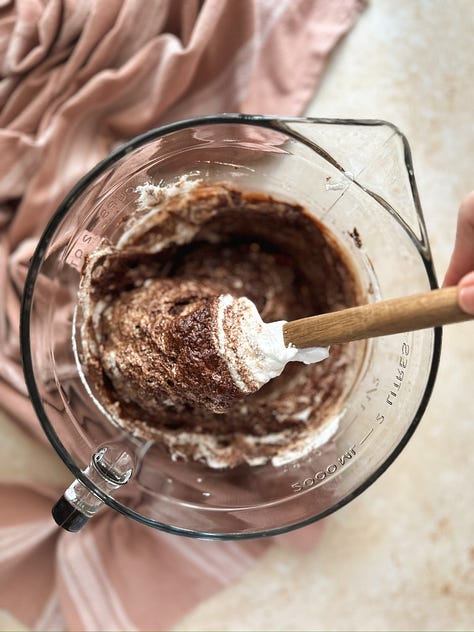
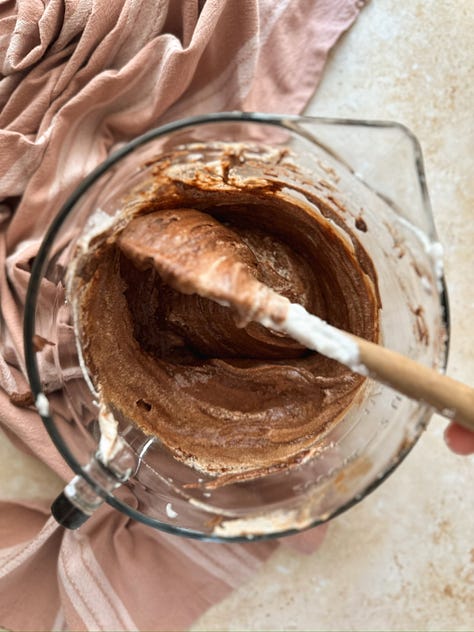
Another glorious thing those hands knew how to handle in that kitchen was bagna càuda, the famous Piedmontese olive oil dip. And oh, the variations! BC was popular on the menu, and sometimes it also became a silky sauce, draping ribbons of freshly cut pappardelle, swirling and shimmering in Jacinto’s stainless steel frying pans. Other times, it was thinned with a bit more vinegar and spooned over extraordinarily crispy vitello parmigiana. Jesus.
Every version was fantastic, but nothing beat the OG unless they blitzed it. When they robocouped it, you’d get something like an elixir: creamy, garlicky, anchored by anchovies and olive oil, the holy trinity of savory deliciousness, if you ask me. The only problem, some could argue, was the color. The red wine vinegar turned the creamy, emulsified sauce a muddy brown. Tonatto-ish. Not a problem for me—I’m a proud defender of brown foods—but could be off-putting for some guests. So the kitchen usually served it the traditional way: unblended.
But I often wonder… if people had just tasted it without seeing the color, would they still have turned up their noses?
That whole loop of a story brings me here: last month, I was invited to go on an AgriTour with my friends from CA Grown, who frequently take me on the best trips. On the schedule, we had an olive oil tasting at Pasolivo led by a certified Level 2 Olive Oil Sommelier. (I still don’t know exactly what the “2” means, but I believe in this room we can all assume this is pretty impressive).

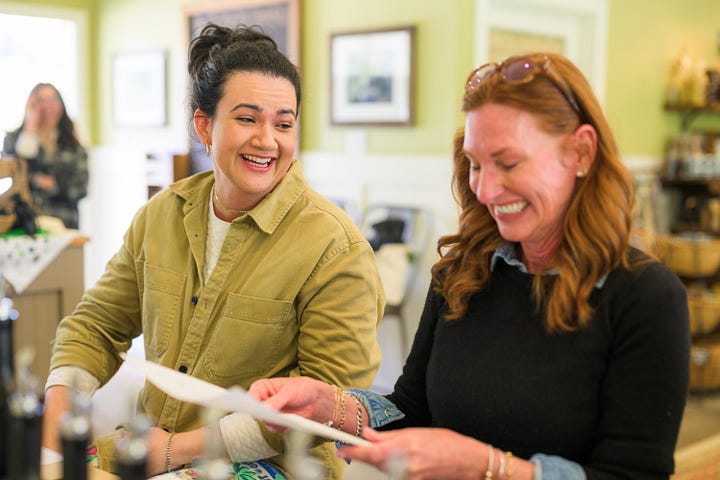
As we walked in, the tasting room was already filled with the fresh scent of green apples, crushed herbs, and warm almonds. On the tables before us lay a captivating tasting wheel, guiding us from bright, fruity notes: green almond, ripe banana, eucalyptus, and tomato leaf, all the way to the “defects” side, where hints of Play-Doh and Band-Aid awaited. Irresistible, innit?
And then the blue cup. A very cute, very demure little vessel, designed specifically for olive oil tastings. It’s cobalt blue because it camouflages the oil’s color, so tasters aren’t swayed by appearances. Because, as it turns out, the color of the oil isn’t always a sign of quality.
Well, well, well… right then, I thought of my poor, misunderstood, creamy bagna càuda. So unfairly judged. Had I served her in a blue cup all along…
The oil tasting was superb, truly one of the most exciting and fun food experiences of my life. I didn’t expect sipping olive oil to feel so… electrifying. But it’s endlessly fascinating to coat your mouth with something so smooth, so alive, and immediately imagine all the flavors you could pair with it.
My favorite, without a doubt, was Olio Nuovo, their unfiltered, limited batch. It's the very first olive oil of the harvest, made from freshly crushed olives just days after picking. Since it’s not available year-round, keep an eye out if you want to try it. That one had such a deep, almost mossy green color. So maybe save that for your bagna càuda? Though… you shouldn’t really heat it as it's more delicate than aged olive oil and also has a lower smoking point. See? Olive oil is serious business!
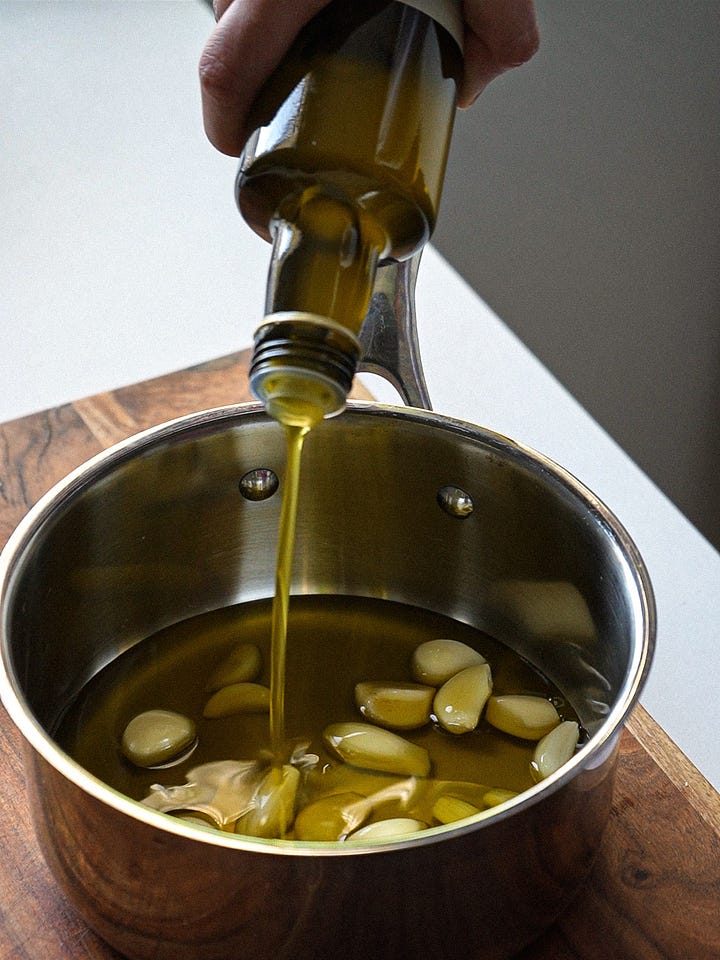
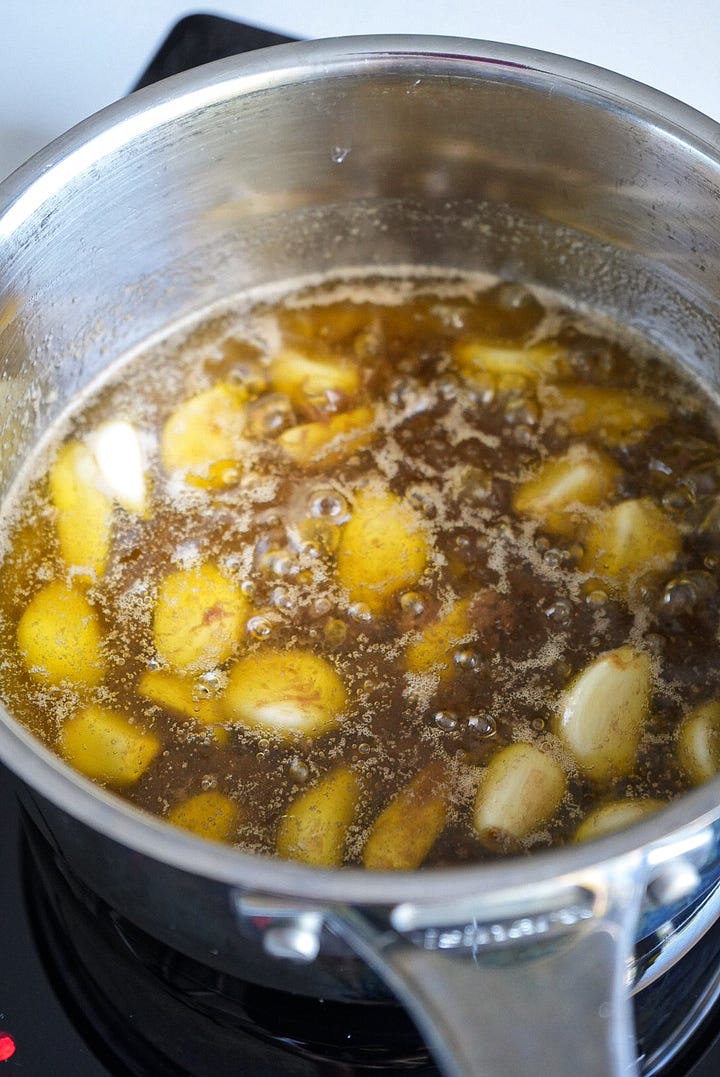
I’ve always loved this recipe: color, flavor, everything. It was a staple in Massachusetts winters, which is basically most of the year there, but honestly, I think it truly shines in spring. When the vegetables are vibrant, crunchy, and fresh, it just feels right to serve something like this. And when the weather warms up and all you want is to nibble on something light and colorful, a big crudités board makes perfect sense.
If you try it, get creative. Add little ravioli, torn pieces of good bread, soft-boiled eggs, or anything to make it more substantial. Or do what I love to do: start with just the veggies as an appetizer, and later, bring in the carbs. Bump up the wine and call it dinner.
As for wine, go for something cold, crisp, and bright. Maybe a Vermentino? A white Rhône blend? Or, if you want to stay true to Piedmont, a Cortese di Gavi is perfect. And for red, I’m always a fan of a good Lambrusco.
No matter when or where you serve it, this dish feels festive. And maybe that’s what we’re all craving a little of right now: a small celebration. A springtime toast. I, for once, made my board as a nod to that kitchen I once worked in, where everything felt vivid and full of life. And just like in that kitchen, where “authentic” was open to interpretation (Italian purists, look away), I used California Olive Oil.


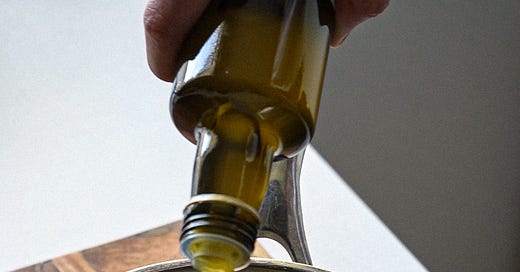


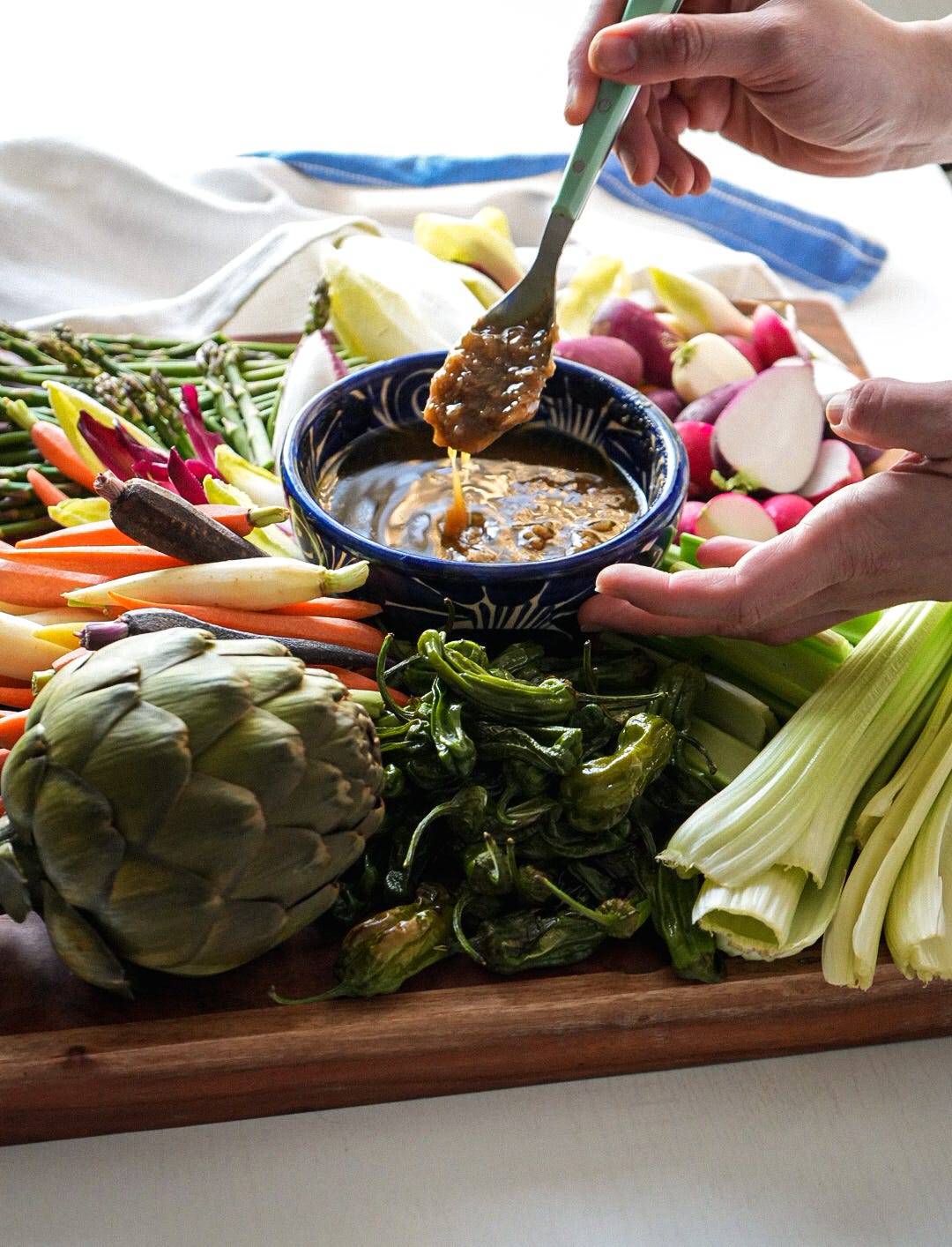
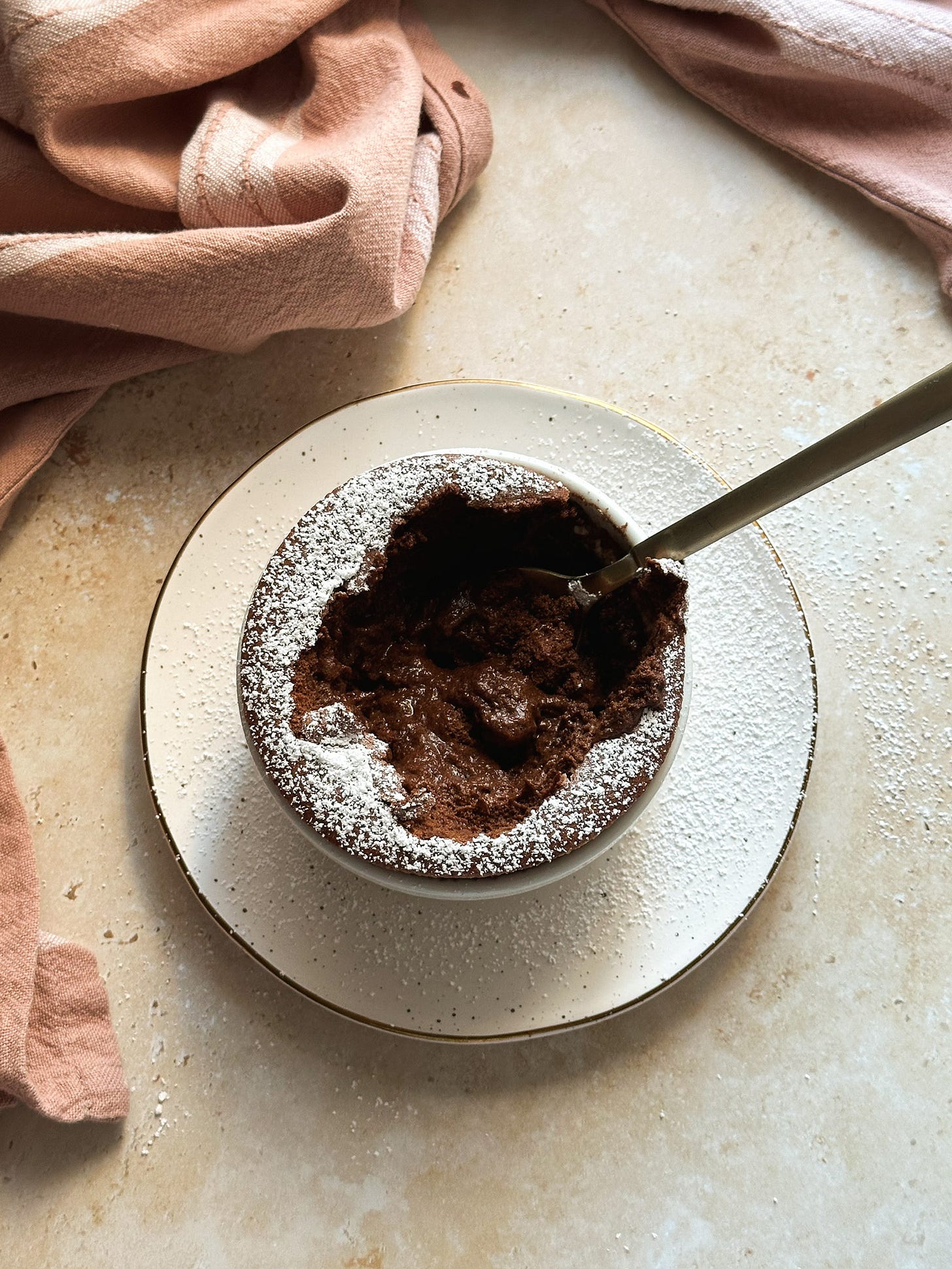
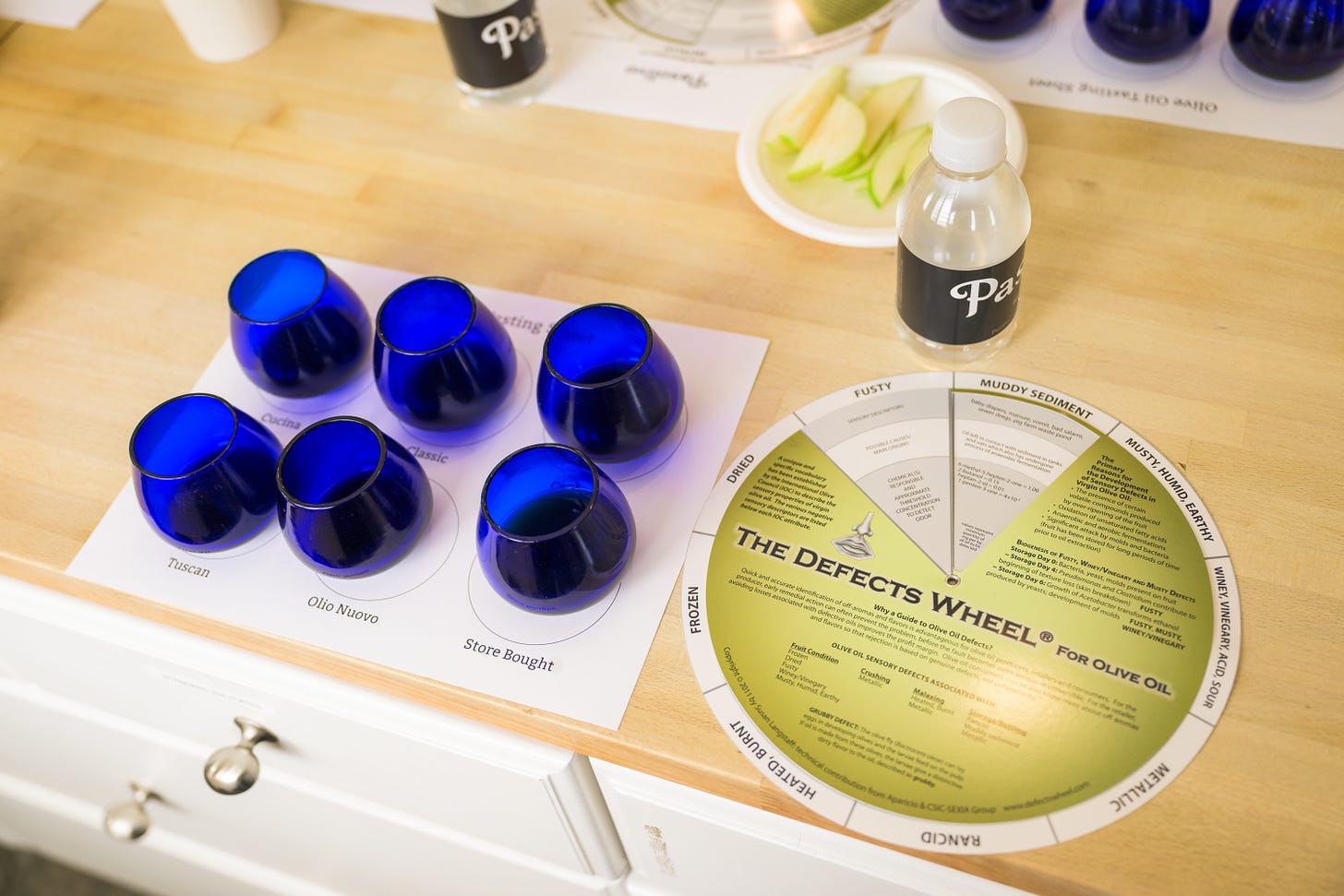
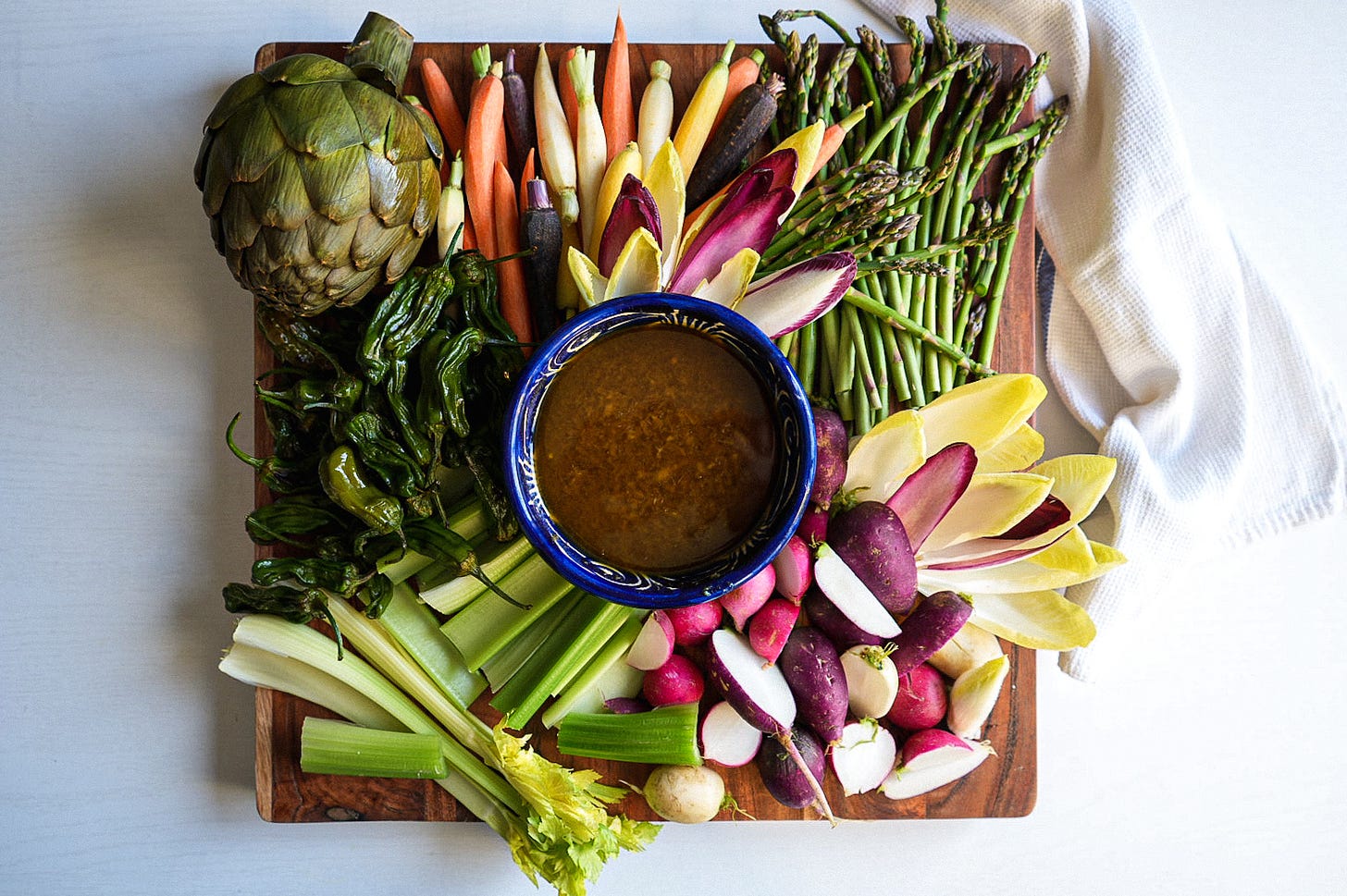
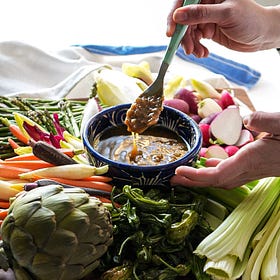
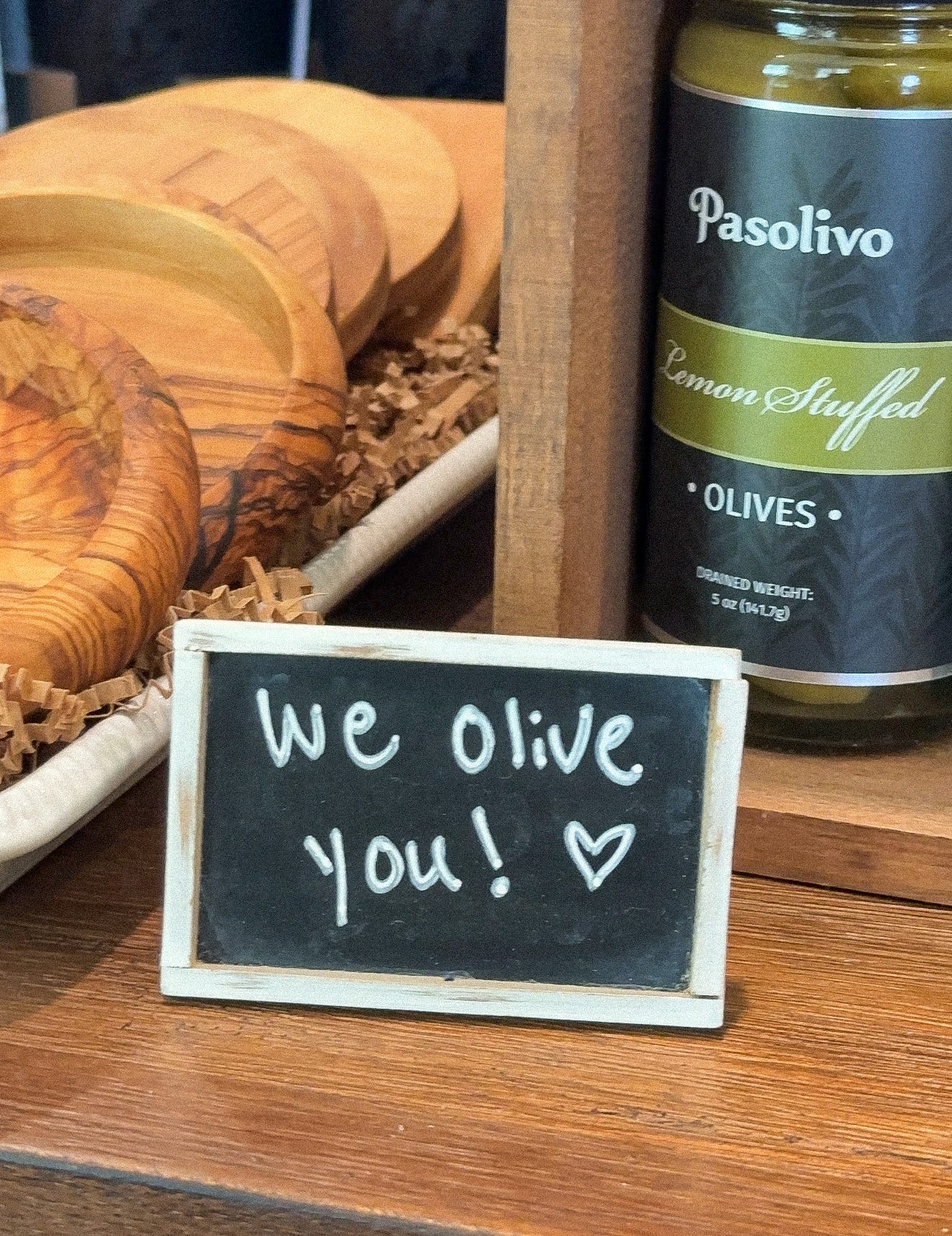


We olive all of this, especially baking with olive oil!
Souffle yes!